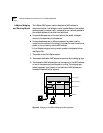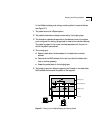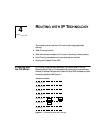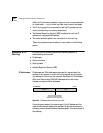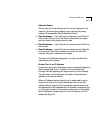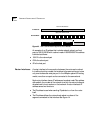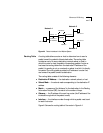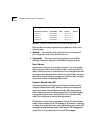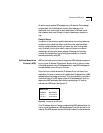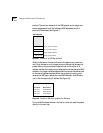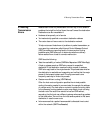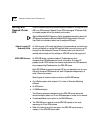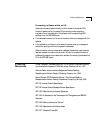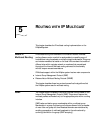
4-6 CHAPTER 4: ROUTING WITH IP TECHNOLOGY
Figure 4-5 Example of a Routing Table in the LANplex Routing Model
Routing table information is generated and updated in either of the
following ways:
■ Statically — You manually enter routes, which do not change until
you change them (that is, they will not time out).
■ Dynamically — The router uses a routing protocol, such as RIP, to
exchange information. Routes are recalculated at regular intervals.
Static Routes
A static route is one that you manually configure in the routing table.
Static routes are useful in environments where no routing protocol is
used or where you want to override some of the routes generated with
a routing protocol. Because static routes do not automatically change in
response to network topology changes, you should manually configure
only a small number of reasonably stable routes.
Dynamic Routes Using RIP
Automated methods of configuring routes help you keep up with a
changing network environment, allowing routes to be reconfigured
quickly and reliably. Interior Gateway Protocols (IGP), which operate
within networks, provide this automated method. The LANplex system
uses the Routing Information Protocol (RIP), one of the most widely
used IGPs, to configure its routing tables dynamically.
RIP operates in terms of active and passive devices. The active devices,
usually routers, broadcast their RIP messages to all devices in a network
or subnet; they update their own routing tables when they receive a RIP
message. The passive devices, usually hosts, listen for RIP messages and
update their routing tables; they do not send RIP messages.
Routing Table
158.101.1.1
158.101.2.1
158.101.3.1
default route
Destination IP Address Interface
1
2
3
1
Gateway
158.101.1.2
158.101.2.2
158.101.3.2
158.101.1.2
Metric
1
1
1
1
Subnet Mask
255.255.255.0
255.255.255.0
255.255.255.0
255.255.255.0



